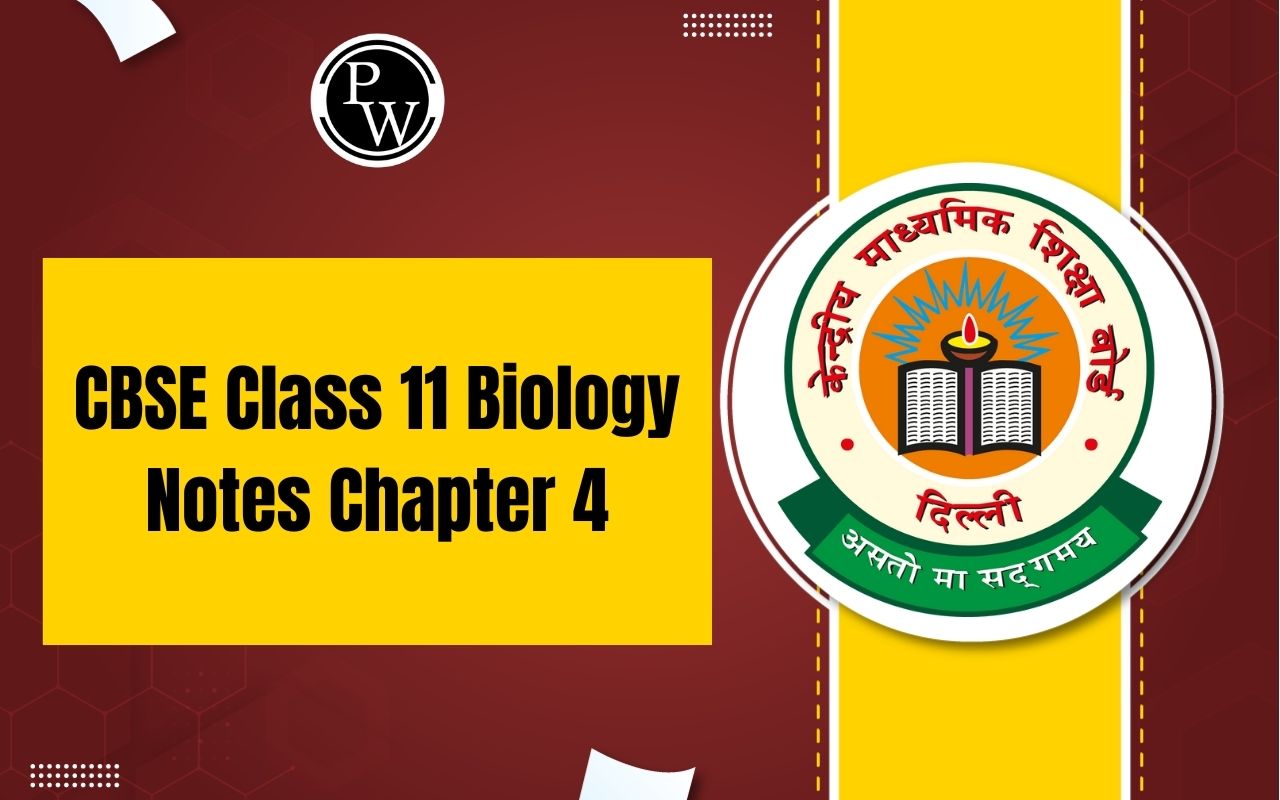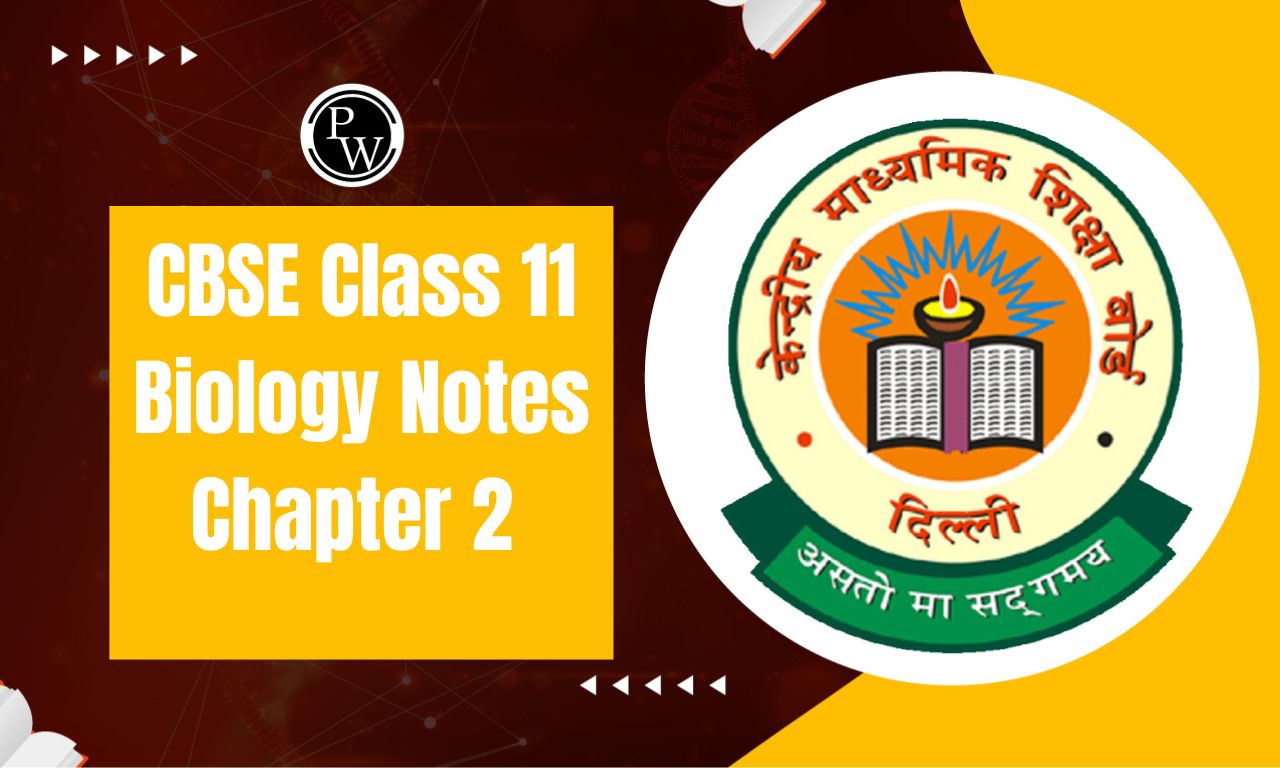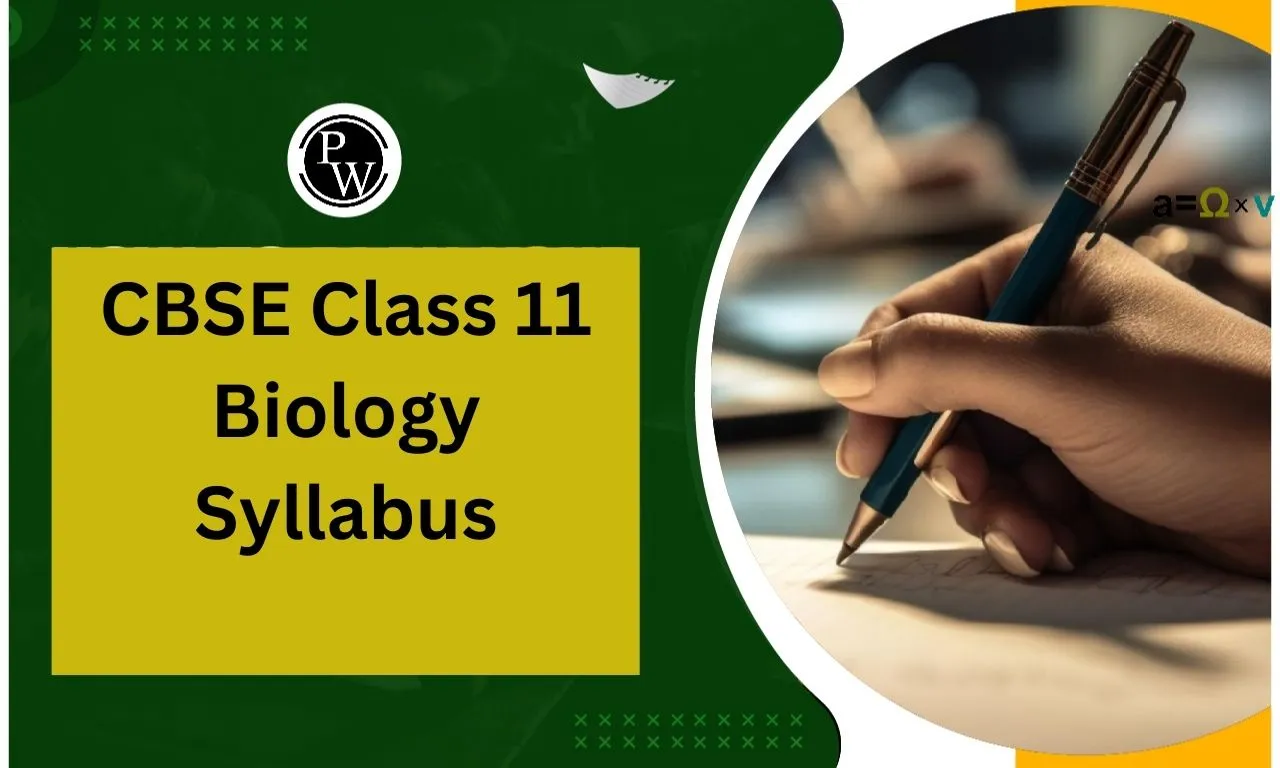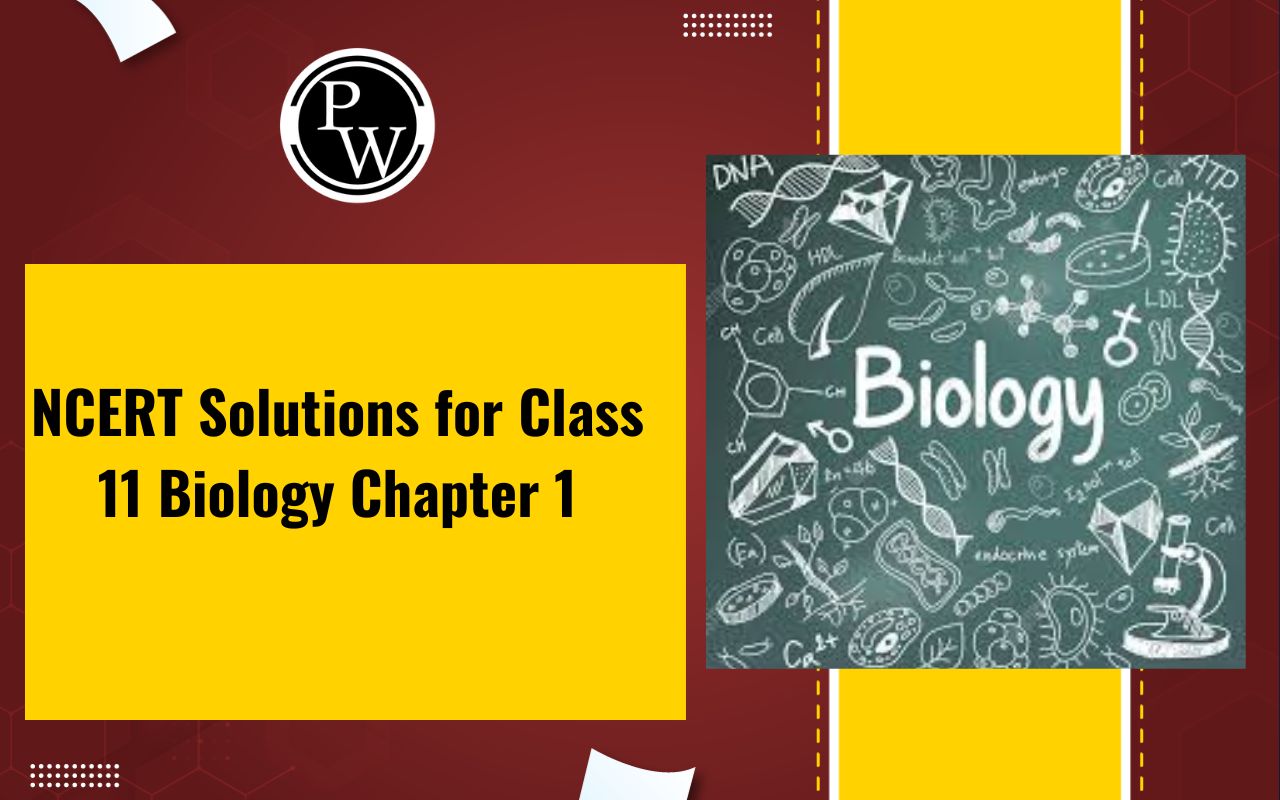
CBSE Class 11 Maths Notes Chapter 13 Limits and Derivatives
Share


CBSE Class 11 Maths Notes Chapter 13: In CBSE Class 11 Maths, Chapter 13 is all about Limits and Derivatives. These are important ideas in calculus, a branch of math used in many fields. In this chapter, students learn about limits, which show how values get closer to each other.
They also study derivatives, which help find rates of change and slopes of curves. By understanding these concepts, students can solve problems in math, science, and engineering. The notes for this chapter explain these ideas clearly, with examples to help students learn and practice. Mastering limits and derivatives in this chapter sets a strong foundation for future math studies and real-world applications.CBSE Class 11 Maths Notes Chapter 13 PDF
You can access the CBSE Class 11 Maths Notes Chapter 13 on Limits and Derivatives in PDF format using the provided link. These notes cover important concepts such as limits and derivatives, which are fundamental in calculus. Understanding limits helps in approaching values or points, while derivatives are crucial for understanding rates of change and slopes of curves. By studying these notes, students can strengthen their understanding of calculus and prepare themselves for higher-level math studies.CBSE Class 11 Maths Notes Chapter 13 PDF
CBSE Class 11 Maths Notes Chapter 13 Limits and Derivatives
The solutions for CBSE Class 11 Maths Notes Chapter 13 on Limits and Derivatives are provided below, provide a detailed guide to understanding these fundamental concepts in calculus. Limits help us understand how values approach each other, while derivatives enable us to find rates of change and slopes of curves. With clear explanations and examples, these notes facilitate a deeper understanding of calculus principles, preparing students for further studies in mathematics and related fields. By mastering the concepts covered in this chapter, students can build a strong foundation for tackling more advanced topics in calculus and applying mathematical principles to real-world problems.Limits
 Consider the function
𝑓(𝑥)=𝑥2
f
(
x
)
=
x
2
. When plotted, we see that as the value of
𝑥
x
approaches 0, the value of
𝑓(𝑥)
f
(
x
)
also moves towards 0.
In general, when
𝑥
x
approaches a certain value
𝑎
a
, and
𝑓(𝑥)
f
(
x
)
approaches a specific value
𝑙
l
, then
𝑙
l
is termed as the limit of the function
𝑓(𝑥)
f
(
x
)
, symbolized as
lim𝑥→𝑎𝑓(𝑥)=𝑙
lim
x
→
a
f
(
x
)
=
l
.
Regardless of the limits, a function should assume a particular value at a given point
𝑥=𝑎
x
=
a
.
There are two ways in which
𝑥
x
can approach a number: from the left or from the right. This implies that all
𝑥
x
values near
𝑎
a
could be either less than
𝑎
a
or greater than
𝑎
a
.
The right-hand limit represents the value of
𝑓(𝑥)
f
(
x
)
determined by
𝑓(𝑥)
f
(
x
)
values when
𝑥
x
tends towards
𝑎
a
from the right, denoted as
lim𝑥→𝑎+𝑓(𝑥)
lim
x
→
a
+
f
(
x
)
.
Similarly, the left-hand limit signifies the value of
𝑓(𝑥)
f
(
x
)
dictated by
𝑓(𝑥)
f
(
x
)
values when
𝑥
x
approaches
𝑎
a
from the left, expressed as
lim𝑥→𝑎−𝑓(𝑥)
lim
x
→
a
−
f
(
x
)
.
In our example, the right and left-hand limits differ. Hence, the limit of
𝑓(𝑥)
f
(
x
)
as
𝑥
x
approaches zero does not exist, even though the function is defined at
𝑥=0
x
=
0
.
If the right and left-hand limits converge to the same value, then that common value represents the limit and is denoted by
lim𝑥→𝑎𝑓(𝑥)
lim
x
→
a
f
(
x
)
.
Consider the function
𝑓(𝑥)=𝑥2
f
(
x
)
=
x
2
. When plotted, we see that as the value of
𝑥
x
approaches 0, the value of
𝑓(𝑥)
f
(
x
)
also moves towards 0.
In general, when
𝑥
x
approaches a certain value
𝑎
a
, and
𝑓(𝑥)
f
(
x
)
approaches a specific value
𝑙
l
, then
𝑙
l
is termed as the limit of the function
𝑓(𝑥)
f
(
x
)
, symbolized as
lim𝑥→𝑎𝑓(𝑥)=𝑙
lim
x
→
a
f
(
x
)
=
l
.
Regardless of the limits, a function should assume a particular value at a given point
𝑥=𝑎
x
=
a
.
There are two ways in which
𝑥
x
can approach a number: from the left or from the right. This implies that all
𝑥
x
values near
𝑎
a
could be either less than
𝑎
a
or greater than
𝑎
a
.
The right-hand limit represents the value of
𝑓(𝑥)
f
(
x
)
determined by
𝑓(𝑥)
f
(
x
)
values when
𝑥
x
tends towards
𝑎
a
from the right, denoted as
lim𝑥→𝑎+𝑓(𝑥)
lim
x
→
a
+
f
(
x
)
.
Similarly, the left-hand limit signifies the value of
𝑓(𝑥)
f
(
x
)
dictated by
𝑓(𝑥)
f
(
x
)
values when
𝑥
x
approaches
𝑎
a
from the left, expressed as
lim𝑥→𝑎−𝑓(𝑥)
lim
x
→
a
−
f
(
x
)
.
In our example, the right and left-hand limits differ. Hence, the limit of
𝑓(𝑥)
f
(
x
)
as
𝑥
x
approaches zero does not exist, even though the function is defined at
𝑥=0
x
=
0
.
If the right and left-hand limits converge to the same value, then that common value represents the limit and is denoted by
lim𝑥→𝑎𝑓(𝑥)
lim
x
→
a
f
(
x
)
.
Algebra of limits
Theorem 1 states various properties of limits for two functions 𝑓 f and 𝑔 g :
If both lim𝑥→𝑎𝑓(𝑥) lim x → a f ( x ) and lim𝑥→𝑎𝑔(𝑥) lim x → a g ( x ) exist, then:- The limit of the sum of two functions is the sum of their limits: lim𝑥→𝑎[𝑓(𝑥)+𝑔(𝑥)]=lim𝑥→𝑎𝑓(𝑥)+lim𝑥→𝑎𝑔(𝑥) lim x → a [ f ( x ) + g ( x )] = lim x → a f ( x ) + lim x → a g ( x ) .
- The limit of the difference of two functions is the difference of their limits: lim𝑥→𝑎[𝑓(𝑥)−𝑔(𝑥)]=lim𝑥→𝑎𝑓(𝑥)−lim𝑥→𝑎𝑔(𝑥) lim x → a [ f ( x ) − g ( x )] = lim x → a f ( x ) − lim x → a g ( x ) .
- The limit of the product of two functions is the product of their limits: lim𝑥→𝑎[𝑓(𝑥)⋅𝑔(𝑥)]=lim𝑥→𝑎𝑓(𝑥)⋅lim𝑥→𝑎𝑔(𝑥) lim x → a [ f ( x ) ⋅ g ( x )] = lim x → a f ( x ) ⋅ lim x → a g ( x ) .
- The limit of the quotient of two functions is the quotient of their limits (provided the denominator is non-zero): lim𝑥→𝑎𝑓(𝑥)𝑔(𝑥)=lim𝑥→𝑎𝑓(𝑥)lim𝑥→𝑎𝑔(𝑥) lim x → a g ( x ) f ( x ) = l i m x → a g ( x ) l i m x → a f ( x ) .
- The limit of a constant multiple of a function is equal to the constant multiplied by the limit of the function: lim𝑥→𝑎[(𝜆⋅𝑓)(𝑥)]=𝜆⋅lim𝑥→𝑎𝑓(𝑥) lim x → a [( λ ⋅ f ) ( x )] = λ ⋅ lim x → a f ( x ) .
Limits of polynomials and rational functions
We know that
Hence,
Let
be a polynomial function
= lim x → a a 0 + lim x → a a 1 x + lim x → a a 2 x 2 + . . . + lim x → a a n x n =lim𝑥→𝑎𝑎0+lim𝑥→𝑎𝑎1𝑥+lim𝑥→𝑎𝑎2𝑥2+...+lim𝑥→𝑎𝑎𝑛𝑥𝑛
= a 0 + a 1 lim x → a x + a 2 lim x → a x 2 + . . . + a n lim x → a x n =𝑎0+𝑎1lim𝑥→𝑎𝑥+𝑎2lim𝑥→𝑎𝑥2+...+𝑎𝑛lim𝑥→𝑎𝑥𝑛
= f ( a ) =𝑓(𝑎)
A rational function 𝑓 f is one where 𝑓(𝑥)=𝑔(𝑥)ℎ(𝑥) f ( x ) = h ( x ) g ( x ) , and 𝑔(𝑥) g ( x ) and ℎ(𝑥) h ( x ) are polynomials such that ℎ(𝑥)≠0 h ( x ) = 0 . Then, lim𝑥→𝑎𝑓(𝑥)=lim𝑥→𝑎𝑔(𝑥)ℎ(𝑥)=lim𝑥→𝑎𝑔(𝑥)lim𝑥→𝑎ℎ(𝑥)=𝑔(𝑎)ℎ(𝑎) lim x → a f ( x ) = lim x → a h ( x ) g ( x ) = l i m x → a h ( x ) l i m x → a g ( x ) = h ( a ) g ( a ) However, if ℎ(𝑎)=0 h ( a ) = 0 , there are two scenarios:- If 𝑔(𝑎)≠0 g ( a ) = 0 , the limit does not exist.
-
If
𝑔(𝑎)=0
g
(
a
)
=
0
, we have
𝑔(𝑥)=(𝑥−𝑎)𝑘𝑔1(𝑥)
g
(
x
)
=
(
x
−
a
)
k
g
1
(
x
)
and
ℎ(𝑥)=(𝑥−𝑎)𝑙ℎ1(𝑥)
h
(
x
)
=
(
x
−
a
)
l
h
1
(
x
)
, where
𝑘
k
is the maximum power of
(𝑥−𝑎)
(
x
−
a
)
in
𝑔(𝑥)
g
(
x
)
and
𝑙
l
is the maximum power of
(𝑥−𝑎)
(
x
−
a
)
in
ℎ(𝑥)
h
(
x
)
.
- If 𝑘≥𝑙 k ≥ l , then the limit is 0 0 .
- If 𝑘<𝑙 k < l , the limit is not defined.
Theorem 2
For any positive integer n 𝑛 , lim x → a x n − a n x − a = n a n − 1 lim𝑥→𝑎𝑥𝑛−𝑎𝑛𝑥−𝑎=𝑛𝑎𝑛−1 .
The proof is shown below.
Dividing ( x n − a n ) (𝑥𝑛−𝑎𝑛) by ( x − a ) (𝑥−𝑎) ,
lim x → a x n − a n x − a = lim x → a ( x n − 1 + x n − 2 a + x n − 3 a 2 + . . . + x a n − 2 + a n − 1 ) lim𝑥→𝑎𝑥𝑛−𝑎𝑛𝑥−𝑎=lim𝑥→𝑎(𝑥𝑛−1+𝑥𝑛−2𝑎+𝑥𝑛−3𝑎2+...+𝑥𝑎𝑛−2+𝑎𝑛−1)
= a n − 1 + a a n − 2 + . . . + a n − 2 ( a ) + a n − 1 =𝑎𝑛−1+𝑎𝑎𝑛−2+...+𝑎𝑛−2(𝑎)+𝑎𝑛−1
= a n − 1 + a n − 1 + . . . + a n − 1 + a n − 1 ( n terms ) =𝑎𝑛−1+𝑎𝑛−1+...+𝑎𝑛−1+𝑎𝑛−1(𝑛 terms)
= n a n − 1 =𝑛𝑎𝑛−1
Limits of Trigonometric Functions
Theorem 3
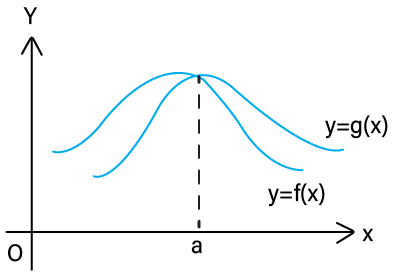 Theorem 3 states that if
𝑓
f
and
𝑔
g
are two real-valued functions with the same domain, and
𝑓(𝑥)≤𝑔(𝑥)
f
(
x
)
≤
g
(
x
)
for all
𝑥
x
in their domain, then if both
lim𝑥→𝑎𝑓(𝑥)
lim
x
→
a
f
(
x
)
and
lim𝑥→𝑎𝑔(𝑥)
lim
x
→
a
g
(
x
)
exist, then
lim𝑥→𝑎𝑓(𝑥)≤lim𝑥→𝑎𝑔(𝑥)
lim
x
→
a
f
(
x
)
≤
lim
x
→
a
g
(
x
)
.
Theorem 3 states that if
𝑓
f
and
𝑔
g
are two real-valued functions with the same domain, and
𝑓(𝑥)≤𝑔(𝑥)
f
(
x
)
≤
g
(
x
)
for all
𝑥
x
in their domain, then if both
lim𝑥→𝑎𝑓(𝑥)
lim
x
→
a
f
(
x
)
and
lim𝑥→𝑎𝑔(𝑥)
lim
x
→
a
g
(
x
)
exist, then
lim𝑥→𝑎𝑓(𝑥)≤lim𝑥→𝑎𝑔(𝑥)
lim
x
→
a
f
(
x
)
≤
lim
x
→
a
g
(
x
)
.
Theorem 4
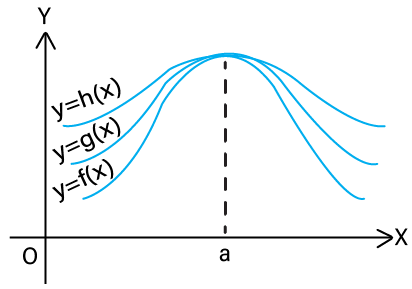 The Sandwich Theorem, or Theorem 4, asserts that if three real functions
𝑓(𝑥)
f
(
x
)
,
𝑔(𝑥)
g
(
x
)
, and
ℎ(𝑥)
h
(
x
)
satisfy
𝑓(𝑥)≤𝑔(𝑥)≤ℎ(𝑥)
f
(
x
)
≤
g
(
x
)
≤
h
(
x
)
for all
𝑥
x
in their common domain, and if
lim𝑥→𝑎𝑓(𝑥)=𝑙=lim𝑥→𝑎ℎ(𝑥)
lim
x
→
a
f
(
x
)
=
l
=
lim
x
→
a
h
(
x
)
, then
lim𝑥→𝑎𝑔(𝑥)=𝑙
lim
x
→
a
g
(
x
)
=
l
.
To prove that
cos(𝑥)<sin(𝑥)𝑥<1
cos
(
x
)
<
x
s
i
n
(
x
)
<
1
for
0<∣𝑥∣<𝜋2
0
<
∣
x
∣
<
2
π
, it is observed that
sin(𝑥)
sin
(
x
)
lies between
cos(𝑥)
cos
(
x
)
and
tan(𝑥)
tan
(
x
)
. Since
0<𝑥<𝜋2
0
<
x
<
2
π
,
sin(𝑥)
sin
(
x
)
is positive. Thus, dividing throughout by
sin(𝑥)
sin
(
x
)
,
1sin(𝑥)<𝑥sin(𝑥)<1cos(𝑥)
s
i
n
(
x
)
1
<
s
i
n
(
x
)
x
<
c
o
s
(
x
)
1
, leading to
cos(𝑥)<sin(𝑥)𝑥<1
cos
(
x
)
<
x
s
i
n
(
x
)
<
1
.
Two important limits are given:
The Sandwich Theorem, or Theorem 4, asserts that if three real functions
𝑓(𝑥)
f
(
x
)
,
𝑔(𝑥)
g
(
x
)
, and
ℎ(𝑥)
h
(
x
)
satisfy
𝑓(𝑥)≤𝑔(𝑥)≤ℎ(𝑥)
f
(
x
)
≤
g
(
x
)
≤
h
(
x
)
for all
𝑥
x
in their common domain, and if
lim𝑥→𝑎𝑓(𝑥)=𝑙=lim𝑥→𝑎ℎ(𝑥)
lim
x
→
a
f
(
x
)
=
l
=
lim
x
→
a
h
(
x
)
, then
lim𝑥→𝑎𝑔(𝑥)=𝑙
lim
x
→
a
g
(
x
)
=
l
.
To prove that
cos(𝑥)<sin(𝑥)𝑥<1
cos
(
x
)
<
x
s
i
n
(
x
)
<
1
for
0<∣𝑥∣<𝜋2
0
<
∣
x
∣
<
2
π
, it is observed that
sin(𝑥)
sin
(
x
)
lies between
cos(𝑥)
cos
(
x
)
and
tan(𝑥)
tan
(
x
)
. Since
0<𝑥<𝜋2
0
<
x
<
2
π
,
sin(𝑥)
sin
(
x
)
is positive. Thus, dividing throughout by
sin(𝑥)
sin
(
x
)
,
1sin(𝑥)<𝑥sin(𝑥)<1cos(𝑥)
s
i
n
(
x
)
1
<
s
i
n
(
x
)
x
<
c
o
s
(
x
)
1
, leading to
cos(𝑥)<sin(𝑥)𝑥<1
cos
(
x
)
<
x
s
i
n
(
x
)
<
1
.
Two important limits are given:
- lim𝑥→0sin(𝑥)𝑥=1 lim x → 0 x s i n ( x ) = 1
- lim𝑥→01−cos(𝑥)𝑥=0 lim x → 0 x 1 − c o s ( x ) = 0
Derivatives
- The derivative of their sum is the sum of their derivatives: 𝑑𝑑𝑥[𝑓(𝑥)+𝑔(𝑥)]=𝑑𝑑𝑥𝑓(𝑥)+𝑑𝑑𝑥𝑔(𝑥) d x d [ f ( x ) + g ( x )] = d x d f ( x ) + d x d g ( x ) .
- The derivative of their difference is the difference of their derivatives: 𝑑𝑑𝑥[𝑓(𝑥)−𝑔(𝑥)]=𝑑𝑑𝑥𝑓(𝑥)−𝑑𝑑𝑥𝑔(𝑥) d x d [ f ( x ) − g ( x )] = d x d f ( x ) − d x d g ( x ) .
- The product rule states that the derivative of the product of two functions is the first function's derivative times the second function plus the first function times the second function's derivative: 𝑑𝑑𝑥[𝑓(𝑥)⋅𝑔(𝑥)]=𝑑𝑑𝑥𝑓(𝑥)⋅𝑔(𝑥)+𝑓(𝑥)⋅𝑑𝑑𝑥𝑔(𝑥) d x d [ f ( x ) ⋅ g ( x )] = d x d f ( x ) ⋅ g ( x ) + f ( x ) ⋅ d x d g ( x ) .
- The quotient rule states that the derivative of the quotient of two functions is the derivative of the numerator times the denominator minus the numerator times the derivative of the denominator, all divided by the square of the denominator: 𝑑𝑑𝑥(𝑓(𝑥)𝑔(𝑥))=𝑑𝑑𝑥𝑓(𝑥)⋅𝑔(𝑥)−𝑓(𝑥)⋅𝑑𝑑𝑥𝑔(𝑥)(𝑔(𝑥))2 d x d ( g ( x ) f ( x ) ) = ( g ( x ) ) 2 d x d f ( x ) ⋅ g ( x ) − f ( x ) ⋅ d x d g ( x ) .
Theorem 6
Theorem 6 states that the derivative of a function 𝑓(𝑥)=𝑥𝑛 f ( x ) = x n is 𝑛𝑥𝑛−1 n x n − 1 for any positive integer 𝑛 n . Proof: By the definition of the derivative function, we have: 𝑓′(𝑥)=limℎ→0(𝑥+ℎ)𝑛−𝑥𝑛ℎ=limℎ→0ℎ(𝑛𝑥𝑛−1+…+ℎ𝑛−1)ℎ f ′ ( x ) = lim h → 0 h ( x + h ) n − x n = lim h → 0 h h ( n x n − 1 + … + h n − 1 ) =limℎ→0(𝑛𝑥𝑛−1+…+ℎ𝑛−1)=𝑛𝑥𝑛−1 = lim h → 0 ( n x n − 1 + … + h n − 1 ) = n x n − 1 This can also be proved alternatively: 𝑑𝑑𝑥(𝑥𝑛)=𝑑𝑑𝑥(𝑥⋅𝑥𝑛−1) d x d ( x n ) = d x d ( x ⋅ x n − 1 ) =𝑑𝑑𝑥(𝑥)⋅(𝑥𝑛−1)+𝑥⋅𝑑𝑑𝑥(𝑥𝑛−1) = d x d ( x ) ⋅ ( x n − 1 ) + x ⋅ d x d ( x n − 1 ) (By the product rule) =1⋅𝑥𝑛−1+𝑥⋅((𝑛−1)𝑥𝑛−2) = 1 ⋅ x n − 1 + x ⋅ (( n − 1 ) x n − 2 ) (By induction hypothesis) =𝑥𝑛−1+(𝑛−1)𝑥𝑛−1=𝑛𝑥𝑛−1 = x n − 1 + ( n − 1 ) x n − 1 = n x n − 1Theorem 7
Theorem 7 states that for a polynomial function 𝑓(𝑥)=𝑎𝑛𝑥𝑛+𝑎𝑛−1𝑥𝑛−1+…+𝑎1𝑥+𝑎0 f ( x ) = a n x n + a n − 1 x n − 1 + … + a 1 x + a 0 , where 𝑎𝑖 a i s are real numbers and 𝑎𝑛≠0 a n = 0 , the derivative function is given by: 𝑑𝑓(𝑥)𝑑𝑥=𝑛𝑎𝑛𝑥𝑛−1+(𝑛−1)𝑎𝑛−1𝑥𝑛−2+…+2𝑎2𝑥+𝑎1 d x df ( x ) = n a n x n − 1 + ( n − 1 ) a n − 1 x n − 2 + … + 2 a 2 x + a 1Benefits Of CBSE Class 11 Maths Notes Chapter 13 Limits and Derivatives
Complete Syllabus : The notes cover all the topics in Chapter 13 as per the CBSE syllabus, ensuring that students don't miss any important concepts.
Key Concepts : They provide a concise and clear explanation of key concepts such as limits, continuity, and derivatives, which are fundamental to understanding calculus.
Easy to Understand : The notes break down complex topics into simpler terms, making it easier for students to grasp difficult concepts..
Self-Study : With comprehensive notes, students can study on their own without much dependence on external help, boosting their confidence.
Concept Clarity : Clear understanding of fundamental concepts helps in building a strong foundation for higher studies.
-
CBSE Class 11 Maths Notes Chapter 13 FAQs
What are limits in calculus?
How are limits calculated?
What is the derivative of a function?
What is the difference between a limit and a derivative?


